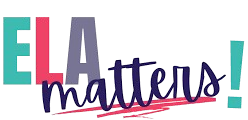In today’s ever-evolving legal landscape, understanding your rights and knowing how to protect them is more important than ever. One innovative framework that has been gaining attention is The Power of Manookian Law: How It Can Protect Your Rights. This unique legal approach is designed to address modern challenges while ensuring that every individual is afforded the protection and fairness they deserve.
A New Perspective on Legal Protection
Manookian Law represents a progressive shift from traditional legal doctrines. At its core, this legal framework is built on the idea that laws should not only punish wrongdoing but also empower individuals to stand up for their rights. It emphasizes restorative justice, transparency, and community involvement in legal processes. By doing so, it offers a more holistic way of resolving disputes and safeguarding personal freedoms.
Historical Background and Evolution
The roots of Manookian Law can be traced back to a growing dissatisfaction with the rigid, sometimes outdated legal systems in place. Legal scholars and reformers noticed that while traditional laws provided a structured approach to justice, they often failed to address the nuanced needs of modern society. As a result, they began to advocate for a system that was more responsive, adaptable, and centered on the individual’s rights.
Over time, these ideas coalesced into what is now known as Manookian Law. Its evolution has been marked by a series of reforms and pilot programs aimed at testing its effectiveness. Early adopters of this approach have reported not only a reduction in legal disputes but also a significant improvement in public trust in the justice system.
Core Principles of Manookian Law
Several key principles underpin Manookian Law, making it a powerful tool for protecting individual rights:
- Empowerment Through Transparency: One of the cornerstones of Manookian Law is the belief that transparency in legal proceedings builds trust. By ensuring that every step of the legal process is open to public scrutiny, it minimizes the chances of corruption and abuse of power.
- Restorative Justice: Instead of focusing solely on punitive measures, Manookian Law emphasizes restorative justice. This means that when disputes arise, the system seeks to repair the harm done and rehabilitate offenders rather than merely punish them.
- Community Involvement: Recognizing that laws affect communities as much as they do individuals, this legal framework encourages community participation in legal decision-making. This not only democratizes the process but also ensures that the laws are more in tune with the needs and values of the society they serve.
- Adaptability: Modern challenges require modern solutions. Manookian Law is designed to be flexible, allowing for the integration of new ideas and practices as society evolves. This adaptability ensures that the law remains relevant and effective over time.
How Manookian Law Protects Your Rights
The power of Manookian Law lies in its practical application to everyday legal issues. Here’s how it can safeguard your rights:
Enhanced Legal Accessibility
One of the most significant benefits of Manookian Law is its focus on making legal processes more accessible to the average person. By simplifying legal language and procedures, it empowers individuals to understand and exercise their rights without the need for extensive legal assistance. This accessibility reduces the power imbalance between legal experts and ordinary citizens, ensuring that everyone has a fair chance in legal disputes.
Preventing Abuse of Power
Traditional legal systems have sometimes been criticized for allowing those in power to manipulate the law for personal gain. Manookian Law, with its emphasis on transparency and community oversight, acts as a check against such abuses. When legal proceedings are conducted openly and involve community participation, it becomes much harder for powerful interests to override individual rights.
Fostering a Culture of Accountability
Under Manookian Law, accountability is not just a buzzword—it is a fundamental principle. Legal authorities, as well as private individuals, are held to high standards of accountability. This approach helps create an environment where everyone is encouraged to act responsibly, knowing that any breach of rights will be met with a fair and impartial process.
Promoting Fairness and Equity
By focusing on restorative justice and community involvement, Manookian Law seeks to ensure that every person is treated fairly. Disputes are resolved in a manner that considers the circumstances of both the victim and the offender, leading to outcomes that are not only just but also equitable. This balanced approach protects individual rights while promoting overall societal harmony.
Conclusion
The Power of Manookian Law: How It Can Protect Your Rights is more than just a catchy phrase—it represents a transformative approach to legal protection. By prioritizing transparency, restorative justice, and community involvement, Manookian Law offers a robust framework for addressing the complexities of modern society. Whether you are facing a legal challenge or simply want to ensure your rights are safeguarded, understanding and embracing this innovative legal philosophy can empower you to take control of your future.
In a world where the legal landscape is constantly shifting, staying informed about new legal paradigms like Manookian Law can make all the difference. It’s a progressive, adaptive, and people-centered approach that promises not only to protect your rights but also to foster a fairer and more accountable society.

